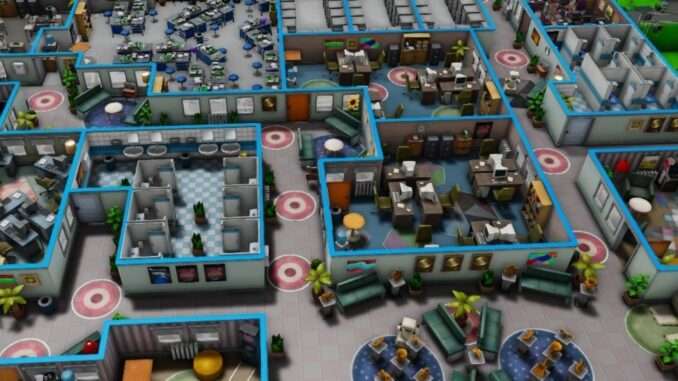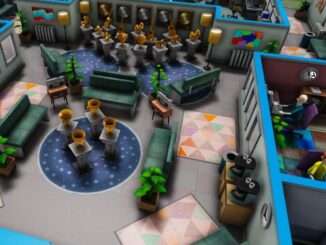
Tips for Increasing LP Rating
I start by making trash games. When I can get 90%+ ratings, I make 8 games that I intend to be my IPs. I release each one. Then, I release ONLY sequels, spin-offs, remasters, ports, and paid updates. Nothing else. Sequelitis is how you build your IPs.
Note that late game there is a slowdown of how fast you can make games. IP Rating degrades over time. For each IP, I release it’s “sequel type” 13 months after the last game. I usually try to give each game 1-3 free updates to help boost sales, then 1 paid update to boost sales. Provided everything has 90%+ ratings, it will slowly build IP.
IP builds VERY slow, especially at higher difficulty levels. And some IPs will climb faster than others. So – my plan is always 8 games over each period of 3 years. Each 3 years, 24 sequelitis games. One game every 3 months is easy to achieve at all stages of the game, and if you’re like me you’re probably capable of releasing a game literally every month. Though I dislike managing 12 IPs. 8 feels about right and gives some breathing room between games.
Win awards at end of year for your games. I always have a November Wk 1 release and it seems to win an award (recency effect seems to be a thing though not confirmed).
When first releasing a console: I use whichever size is defined as “The smallest size I can score 90%+ with”. A B level game in 1982 can score 90%+, so my first several games are going to be B games. This will help sell some copies of the console (exclusive game) and give it a small catalog.
Tradeoff – the B size game in 1982 will sell fewer copies than the same game as B+. Game size has an impact on sales. When you’re first releasing a console you don’t have any units sold, or active users, or market share. You might as well work on the cheap. It costs less to develop the smaller game, so the loss leader will lose less.
In 1982, I can release a 90%+ B game every week. Not exaggerating. In 1982, the B+ game might take me 2-3 weeks. So my first 4 weeks, I might release a B game every week. Once I have 300k total Active Users on my platform, I upgrade to B+. I could be wrong but 300k sold will profit a B+ game size if I remember correctly. At this point, all games further will be B+ because it can make the money back while increasing sales. At this point, making a B game would be worthless as it wouldn’t sell enough units even as a 100% game to matter.
Note: By 1982 I have: 5 Game Developer Rooms, 20 desks each. This room will have 15 Game Devs and 5 Programmers. Later game, programmers move to their studio once it unlocks. One of these game dev rooms handles engines, paid updates, free updates, contracts. One of each Sound, Graphics, Quality rooms, 12 desks per room. I am able to churn out games very fast.
If you are new, this might seem like a lot. The truth is, I know how to minimize which gameplay features I am using. I might be making a B game in 1981 with 3 gameplay features despite that I could make it a B+ game with 13, I know the B with 3 features will still score 90%+ for a little while. I will upgrade to B+ game size when the platforms I am using have enough active users to make the higher game size worth it.
Once you are more seasoned, you will learn how to set up and arrange your rooms for maximum efficiency.
Also, releasing 90%+ games. You know the quality/sound/graphics rooms? Well, you know how they each have la small list of improvements they can add to a game? Do this test. Start a game, save right before the popup telling you that it’s done. Then save to 2 games:
Game 1: Let each room add everything it can. Polish one extra week, check the rating.
- Reload
Game 2: Pause. Now, keep checking the game development progress. When it says 80%-100% immediately finish the game right now and do not let it finish upgrades.
While there might be a few RNG exceptions, in most cases, Game 2 will get the same rating for less time, less money. You don’t need the rooms to finish their stuff. If your rating is below 90% – RELOAD. Let 1-2 rooms complete one thing, SAVE, try again. If it still doesn’t get 90%, add one gameplay feature.
Point is – you can practice this and learn exactly what and how much is needed to actually get a 90%+ game.
- Mid game, you should be getting 95%+ forever.
- Late game, you should never have a game under 98%.
All assuming you are using Sequelitis strategy. The game will stop you (RNG) from getting 99%-100% but if you qualify certain minimums you won’t get lower than 95%-98% (early game 90%). Learn those thresholds by game size, and estimated game year. These estimates may vary depending on your start date, I always start in 1976 start.
I’ve had 100% B size game in 1983 with ONE gameplay feature. But, it was designed by a staff of 120 people. I bring this up as a teachable thought exercise only. Once you “break” the way you “should” think about the game, and develop a different mindset about 90%+ games and how to chain produce them, a lot of options open up.
For a while, I was a madman releasing 20 games a year (even in 1978) and managing 24 IPs. I would finish a game the same week I started it, then polish for one week. It became a LOT. I downgraded myself to 8 games a year.





Be the first to comment